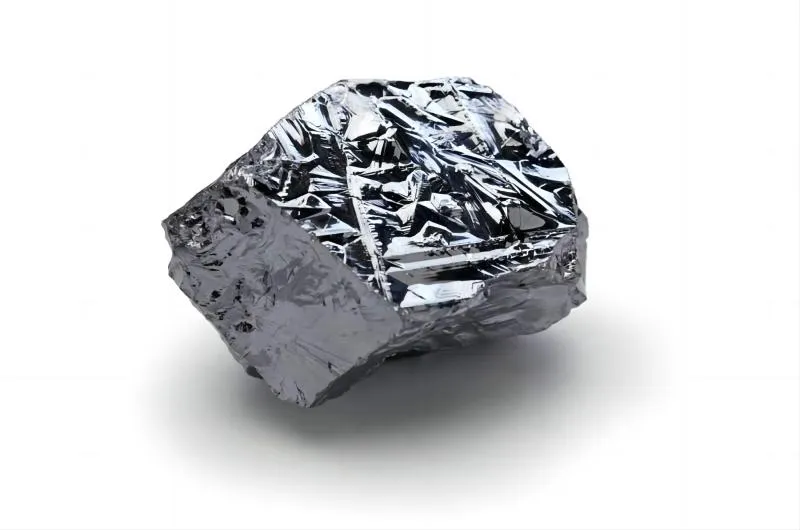BY  GENN
GENN
2024/06
Blog
What Is The Percentage Of Silicon In Ferrosilicon?
Composition and Manufacture
Ferrosilicon is typically produced in submerged-arc electric furnaces by reducing silica or sand with coke in the presence of iron. The process involves the combination of iron (Fe) and silicon (Si) in varying proportions, resulting in an alloy where silicon content ranges from approximately 15% to 90%. The common commercial grades of ferrosilicon contain around 15%, 45%, 75%, and 90% silicon.
Manufacturing Process
- Raw Material Preparation: The primary raw materials—quartz (SiO₂), iron ore, and reductants (like coke)—are meticulously prepared and graded.
- Smelting: These materials are fed into an electric arc furnace. The intense heat facilitates the reduction of silica to silicon, which then combines with iron to form ferrosilicon.
- Refinement: Post-smelting, the molten ferrosilicon is tapped and cast into ingots or other desired forms, cooled, and then crushed into sizes suitable for different applications.
The Role of Silicon Content
The percentage of silicon in ferrosilicon plays a critical role in defining its properties and applications. Each grade is tailored to meet specific industrial needs:
15% Silicon Ferrosilicon: Predominantly used in foundries for cast iron production, it acts as a powerful inoculant, promoting the formation of graphite.
45% Silicon Ferrosilicon: Employed as a deoxidizer in steelmaking, this grade aids in removing excess oxygen from the steel melt, thereby enhancing the quality and durability of the final product.
75% Silicon Ferrosilicon: The most widely used grade, it serves multiple purposes, including deoxidation, alloying, and as a reducing agent in the production of other ferroalloys. It is also critical in the manufacture of magnesium ferrosilicon (MgFeSi) for nodular cast iron.
90% Silicon Ferrosilicon: This high-purity grade finds use in specialized applications where minimal impurities are essential. It is crucial in the production of silicon steel, which is integral to electrical transformers and motors.
Applications and Industry Relevance
- Properties and quality of steel.
- Foundry Industry: In cast iron production, ferrosilicon influences graphite morphology, improving machinability and strength.
- Magnesium Production: High-silicon ferrosilicon is vital in producing magnesium via the Pidgeon process, wherein it acts as a reducing agent.
- Electricity and Electronics: Silicon steel, derived from ferrosilicon, is essential in manufacturing electrical components, contributing to energy efficiency and performance.
What Is The Percentage Of Silicon In Ferrosilicon?
Ferrosilicons come in a range of silicon percentages; common commercial formulations include 15%, 45%, 75%, and 90% silicon. The remaining material is mostly iron, with other elements like calcium and aluminum making up around 2% of it.
Ferrosilicon is an alloy of iron and silicon with different proportions of elemental silicon to iron. Ferrosilicon grades that contain 15%, 45%, 75%, and 90% silicon are the most common types available on the market. The remaining fraction is made up of iron and 2% or so of additional elements like calcium and aluminum.
Ferrosilicon’s average silicon concentration ranges from 15 to 90 percent weight. Ferrosilicon that is sold commercially often includes 15, 45, 75, or 90-weight percent silicon.
75 weight percent silicon (FeSi75) makes up the most common grade of ferrosilicon, while the actual percentage might vary from 15 to 90 weight percent according to the application.
In conclusion, ferrosilicon contains anywhere from 15% to 90% silicon, and different grades are available to meet the needs of diverse industrial uses.
The silicon content in ferrosilicon is not a mere numerical figure but a determinant of its functionality and application scope. From enhancing the structural integrity of steel to optimizing the performance of electrical devices, the role of silicon in ferrosilicon is multifaceted and indispensable. For industry professionals and metallurgists, comprehending the nuances of silicon percentages in ferrosilicon is crucial for optimizing production processes and achieving desired material properties.
By delving into the silicon spectrum within ferrosilicon, we unearth the foundational elements that drive innovation and efficiency in the metallurgical domain, reinforcing the alloy’s status as a cornerstone of modern industry.










